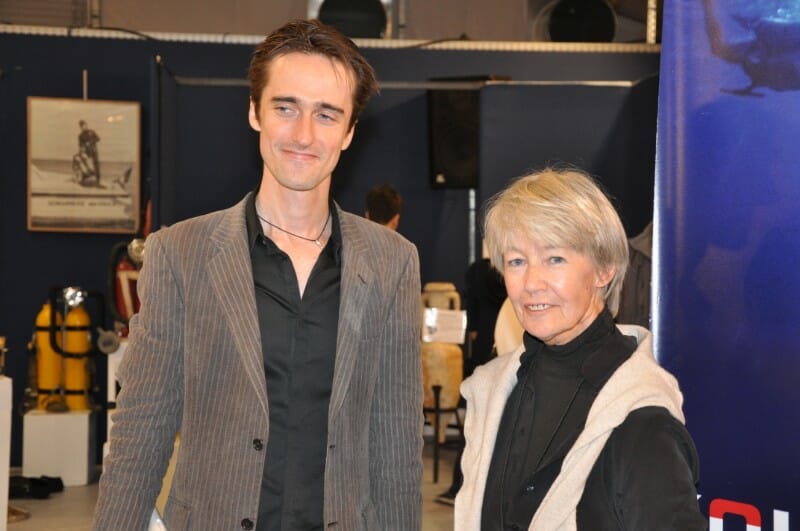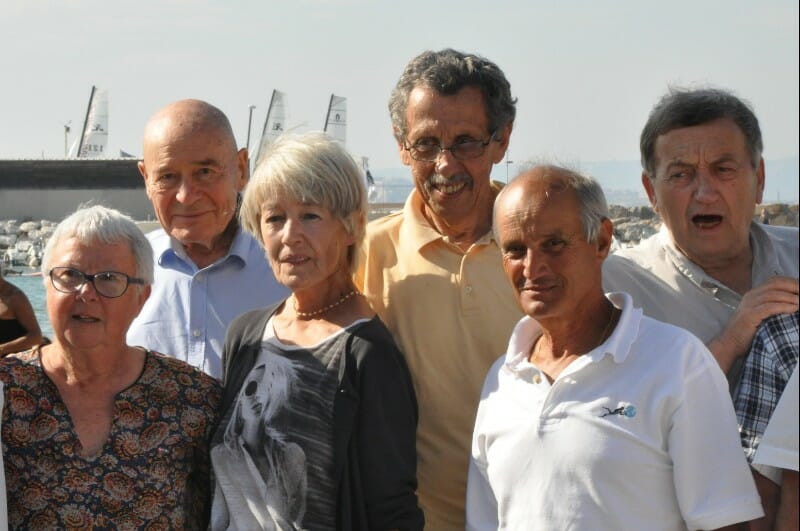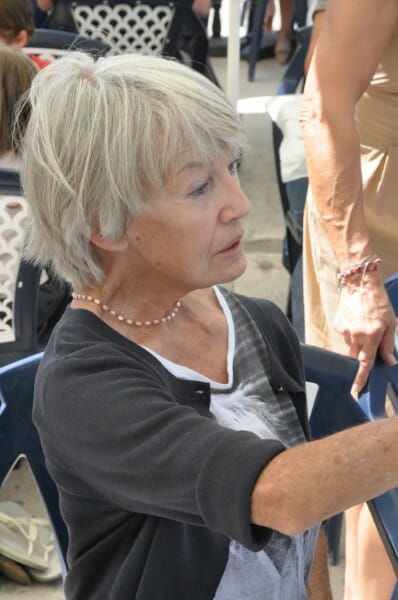Remembering Hedwige Bienvenu, chief editor of the Cousteau films
By Franck Machu.
Hedwige Bienvenu, who died in April 2018, was the chief editor of the Cousteau films. She was preceded in this task by Georges Alépée and John Soh, and was able to take over masterfully. When Jacques-Yves Cousteau is in Paris, the two people with whom he spends the most time working are Hedwige Bienvenu and Lise Coenca, his secretary.
Beginning at Cousteau
Hedwige Bienvenu began in cinema in 1962, as a scriptwriter. She learned on the job and had some internships, before going on to editing, where she worked for Frédéric Rossiff, the famous animal filmmaker. She first worked with Cousteau in 1971, when he made the French versions of the films on otters, octopuses, and dolphins. She recorded Philippe Diolé, translated the French texts, gave her opinion on the tone, the duration of the sentences, and accomplished the purely technical part of voice-image-music editing. However, she refused to enter the team at that time, and went back to traditional cinema, working on feature films with Papatakis, Trintignant, Drach. She wanted to stay in feature films and find her path.

Voyage to the Edge of the World
When Cousteau needed a film editor for the new feature film on Antarctica, in 1975, he called on her. Even though Marshall Flaum, the American producer of the series of the underwater Odyssey, gave his opinion on the editing of this feature film, it is a film entirely edited in France, in which Hedwige established her signature. The production company Les Requins Associés, located in Neuilly, occupies a small house that includes Cousteau’s office and secretary, three editing rooms, and a projection room. “Cousteau was a man of images, and at the same time very rigorous,” she explained. He had outstanding judgment in choosing one shot over another. After “Journey to the End of the World” Hedwige is deeply committed to working with Cousteau.

Cousteau and Bienvenu, high standards
She meets Metromedia’s American crew, John Soh, Marshall Flaum, where a solid team works on each film: a filmmaker, an author, a writer, a musician, 2 or 3 production secretaries. She learns and assimilates how they conceive the series. However, as she would often remind, Cousteau was always strongly involved. He paid a great deal of attention to the meaning of the lyrics, to their musicality. “He corrected constantly,” she explains. We arrived at the auditorium to record the comments; we had the images, the texts. What should have taken an hour or two would take the whole day. It was essential for him.

The memory of the Cousteau films
Hedwige Bienvenu was responsible for the editing of most of the Cousteau films produced between 1975 and 1988, and more than 32 films were signed by her, including the retrospective films, which are taken from archive footage. Having spent more time at her editing table watching Cousteau’s images than any other person, she embodied the memory of Cousteau’s films. Her disappearance is a heavy loss. The sublime “Voyage to the Edge of the World,” narrative of the Antarctic adventure of the Calypso, is one of the jewels of his art.
The Cousteau Society send their heartfelt condolences to her family and friends.